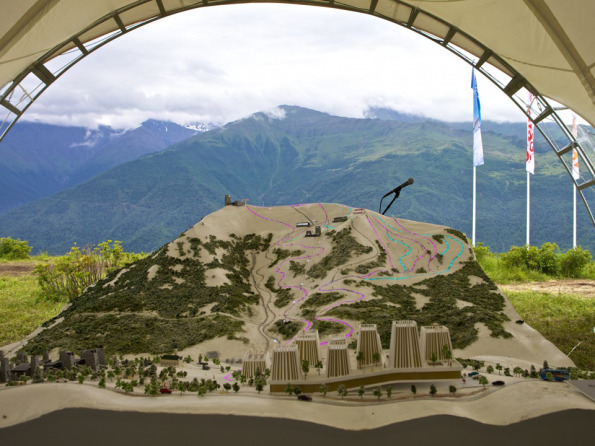
Moscow Fails to Deliver on Promises of Investment in the North Caucasus
Publication: Eurasia Daily Monitor Volume: 11 Issue: 202
By:

Moscow’s ability to finance the North Caucasus republics took a substantial hit in 2014 as the financial situation in the country deteriorated. Out of roughly $1 billion in investments in infrastructure projects planned for the region this year, the Russian government disbursed less than a half. The problem is amplified by the low level of efficiency of government investment in the North Caucasus. As Natalya Zubarevich, a well-known Russian expert on regional finances, said: “The entire North Caucasian Federal District, with the exception of Stavropol region, uses 9 percent of budget investments in the Russian Federation, but only 3 percent of all private investment goes there. So, some government money flows into the region, but it produces few results because the efficiency of these expenditures is very low” (kavpolit.com, November 6).
While Russian experts lament the inefficiency of government investment in the North Caucasus, data also indicates that the central government actually slashed investment in the region. The situation with regional finances in Russia rapidly deteriorated in the second half of 2013—prior to the Russian-Ukrainian conflict, and before the recent fall in oil and gas prices and before the onset of Western sanctions (socpol.ru, accessed November 12).
Interestingly enough, the Russian government still pretends to have the ability to finance the regions lavishly. The Federal Investment Program project for 2015, for example, envisages a 21-percent increase in regional investments across the Russian Federation. However, almost the entire investment in the North Caucasus this year went to the reconstruction of two highways, one reaching to the border with Georgia and the other cutting across the region from east to west. At the same time, the Russian Federal Program for the Socio-Economic Development of Ingushetia in 2010–2016, for example, received no funds (kavpolit.com, November 6). Moscow appears increasingly to be making empty promises to the regions, especially in the North Caucasus.
Monitoring of regional finances by the Independent Institute of Social Policy revealed that Moscow increased financing of the regions to make sure they have enough money to cover their day-to-day activities while long-term investment projects were cut. The move reflected the deteriorating financial situation in the regions as well as the overstretching of Moscow’s financial resources (socpol.ru, accessed November 12). These indicators mean that the Russian government will not make any significant strides to improve the economy of the North Caucasus. Even the few functioning manufacturing plants of the Russian military industrial complex in the North Caucasus failed to receive support from the central government in 2014 (kavpolit.com, November 6).
Moscow apparently is preparing subsistence-level financing for the North Caucasians. The question is how the new economic conditions will be received by the elites and the people in the restive region. North Ossetia’s Prime Minister Sergei Takoev called on his colleagues “to think about survival.” According to Takoev, the budgetary conditions in 2015–2016 will be harsh and everyone should think about cutting expenses and finding new resources (region15.ru, October 17).
If the situation in North Ossetia stays about the same as it has been, it is harder to predict how the situation in less stable regions of the North Caucasus will evolve. Most of the region’s conflict-prone republics, such as Dagestan, Chechnya, Ingushetia, also tend to be the most dependent on funding from Moscow. Ingushetia, for example, appears to be entirely funded by Moscow (socpol.ru, accessed November 12). The government will either have to find money to finance its social obligations or allow the regions to find their own money.
Either way, it will not be an easy decision for Moscow. The Russian government is likely to be short on money, given its policy of stealth aggression against Ukraine and the Western sanctions that policy has triggered. At the same time, due to the rise of Russian nationalism, with its idea of a “Russian World” that needs to be united under the scepter of a Russian tsar, it will be politically risky for the Russian leadership to lavishly fund the ethnically foreign North Caucasians. Following a long tradition, Moscow is unlikely to allow any foreign investment in the North Caucasus. The Russian authorities have experimented with allowing Turkish and Iranian businesses into the region, but so far these attempts have appeared to be halfhearted and inconclusive. Tight political and economic control over the North Caucasus remains a priority for the Russian government, at the expense of developing the area. The Russian government does not even allow regional governments to access natural resources on their territory to sustain themselves (see EDM, October 1).
Lingering friction between Moscow and the North Caucasus is likely to increase, if the financial constraints mount and the Kremlin does not grant the republics greater freedom to operate. Even though Moscow is unlikely to run out of money to buy off the elites in the region, the basis for broad popular support may be lost, which could result in further destabilization of the region.




